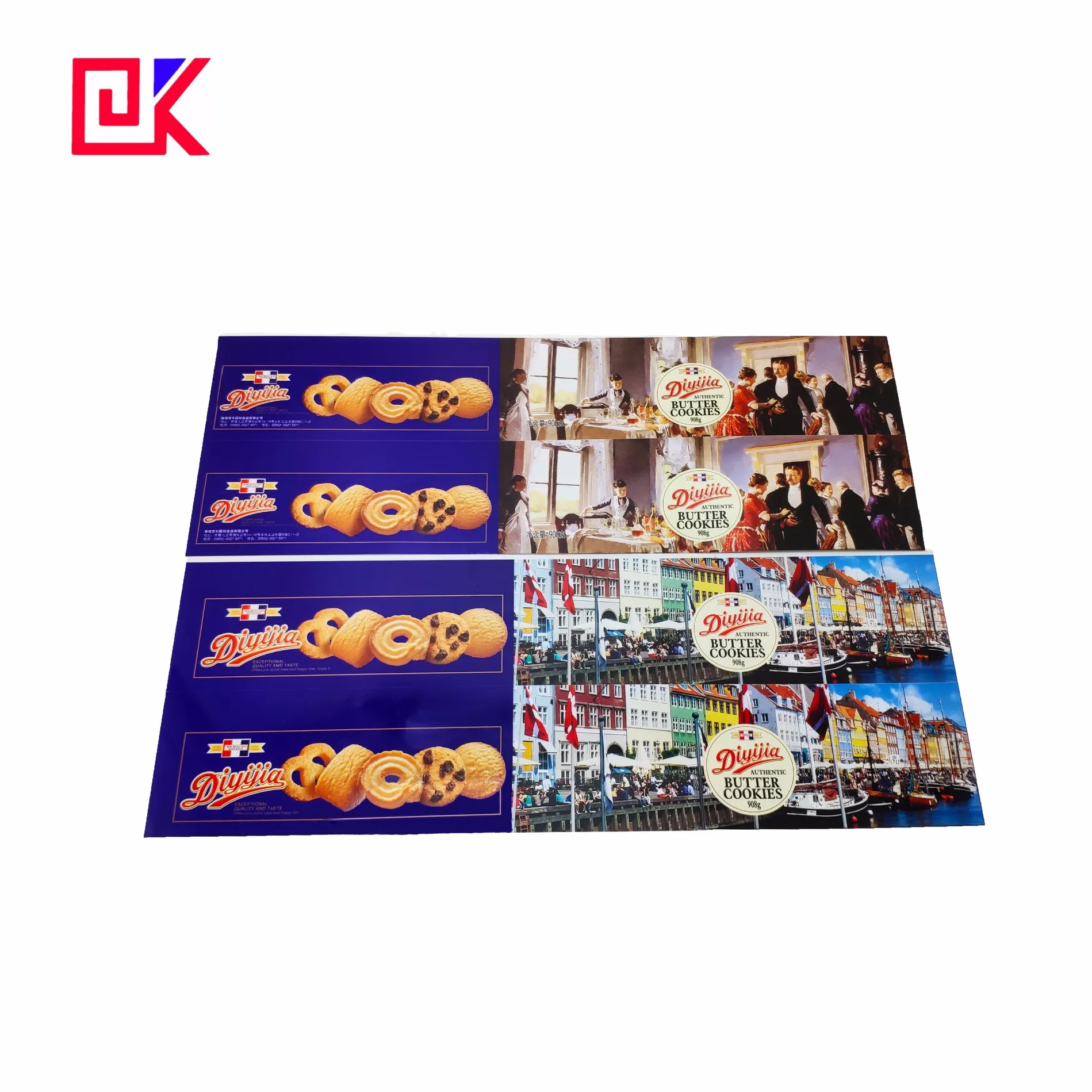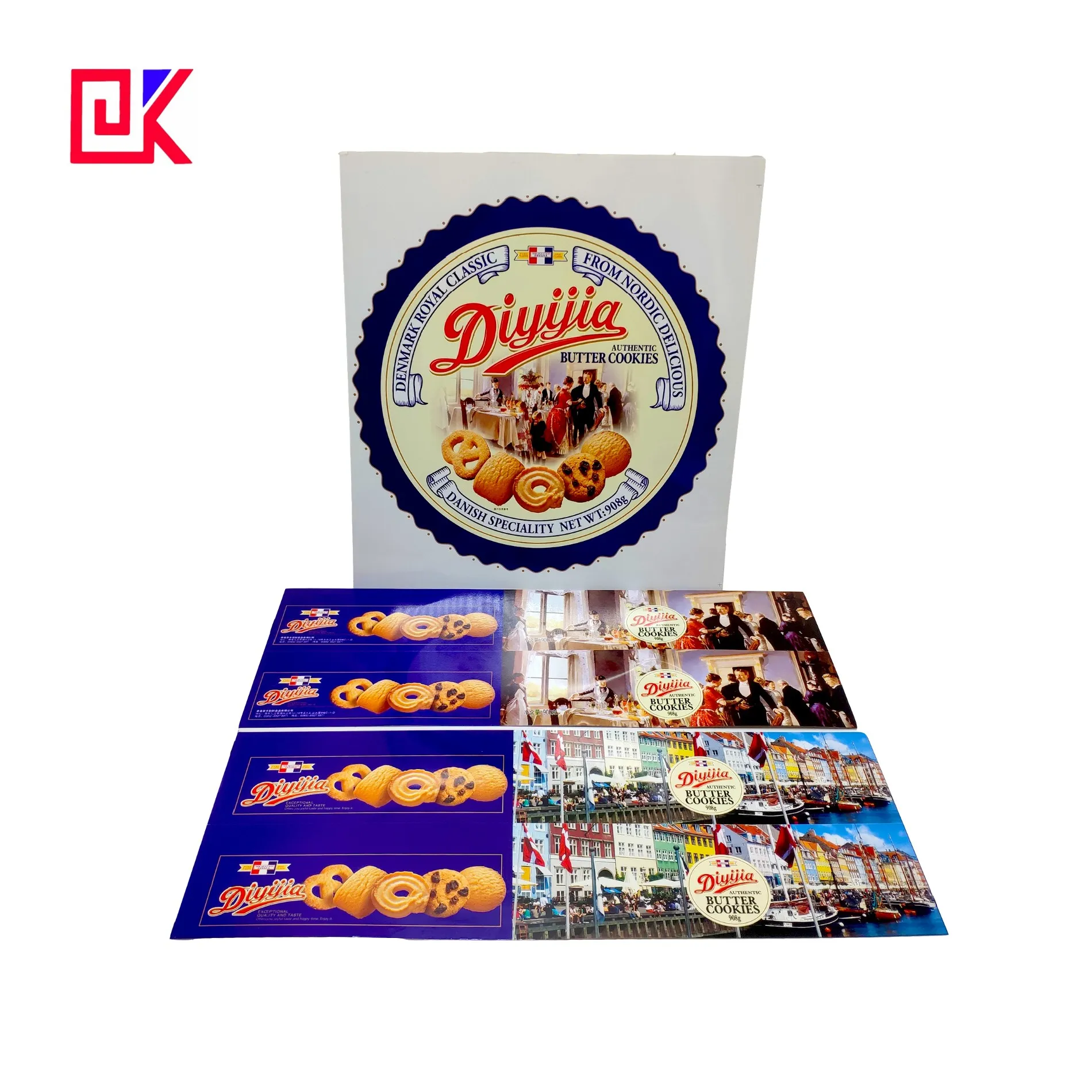As a common form of food packaging, cookie jars have long been deeply rooted in people's daily lives. It not only serves to store biscuits and prevent food from spoiling, but also becomes a good gift and storage item due to its exquisite appearance. So, how are cookie jars made? As a metal material with strong corrosion resistance, can tinplate sheets be an ideal material for making cookie jars?
This article will discuss in detail the production process of cookie jars and the application of tin plate sheets in them to help everyone better understand the technology behind this food packaging.

What is the production process of cookie jars?
The production of cookie jars is not a simple metal processing. It involves multiple links, including raw material selection, molding processing, surface treatment and assembly. The materials used to make cookie jars are usually required to have the characteristics of corrosion resistance, good sealing, and strong plasticity to ensure the safe storage of food and the overall beauty of the packaging.
Selection of raw materials
The production of cookie jars first requires the selection of suitable raw materials. Common materials include tinplate sheets, aluminum and plastic. Among them, tinplate sheets have become the preferred material for making cookie jars due to their good corrosion resistance, plasticity and excellent printing performance. Tin plate sheet is a metal material with tin plated on the surface of steel plate. The tin layer can effectively prevent steel from rusting and is easy to process into various shapes.
Although aluminum is also lightweight and rust-proof, it has low strength and is not easy to print exquisite patterns on the surface, so it is relatively less used. Although plastic is low-cost, it cannot compare with metal materials in terms of environmental protection and aesthetics. Therefore, in recent years, metal cans, especially tin plate sheet cans, have gradually become the mainstream of the market.
Cutting and stamping of materials
After determining the raw materials, the next step is cutting and stamping of the materials. Tinplate sheet is usually supplied in the form of large coils. When making biscuit cans, the large coils need to be cut into small pieces according to the design drawings. These cut tinplate sheets will become the initial shape of the can body, can lid and can bottom.
After cutting, the material will be sent to the stamping equipment for further processing. Stamping is to deform the tinplate sheet under high pressure through the combined action of the mold and the punching machine to form the basic outline of the can body, can lid and can bottom. Since the shapes of biscuit jars are diverse, including round, square, oval and other forms, the design of stamping dies will also be different. During the stamping process, the tin plate sheet material is formed into the required shape through cold working and its surface is kept smooth and flat.
Welding and crimping
The can body after stamping is usually a flat metal sheet, which needs to be bent and processed into a cylindrical or other required shape through welding or crimping technology. Welding is to heat the metal edges on both sides of the can body to a molten state, so that they are combined together to form a sealed can body. The crimping technology is to bend the metal edges and firmly combine the can body by mechanical means. The crimping method is usually used to connect the can body, the bottom and the lid of the tinplate sheet can to ensure that the biscuit jar has good sealing and stability.
In the welding and crimping process, precision is very important because the flatness and sealing of the can body directly affect the use effect of the can body. Poorly sealed cans may allow outside air to enter, affecting the shelf life of biscuits.
Surface treatment and printing
Although the finished tin plate sheet can has the basic anti-rust function, it still needs surface treatment to further improve its appearance and durability. Surface treatment includes coating protection, printing and spraying.
The surface treatment of tinplate sheet must first be cleaned to ensure that there is no oil and impurities on the surface. Subsequently, the can is treated with a protective coating, which can not only further improve the corrosion resistance of the material, but also increase the adhesion of the ink, preparing for the subsequent printing process.
The next printing link is the most important step in the entire biscuit can production, which is directly related to the aesthetics and commercial value of the finished product. Since the surface of tinplate sheet is smooth and does not absorb ink, special metal printing ink is required for printing. Usually, lithographic printing technology is used, and the surface of the can is presented with rich patterns and texts by superimposing printing colors multiple times.
After printing, the tinplate sheet can also be baked at high temperature to make the ink firmly adhere to the metal surface to ensure that it will not fall off or fade during long-term use. For some special design requirements, the surface of the can body may also be coated to give it a matte or glossy effect and increase the texture of the product.
Finished product assembly
After the surface treatment is completed, the various parts of the biscuit jar can be assembled. Usually, the biscuit jar consists of three parts: the can body, the can lid and the can bottom. During the assembly process, the can lid and the can bottom are usually connected to the can body by crimping to ensure that the can body has good sealing performance. For some high-end biscuit jars, sealing materials such as silicone rings may also be used to further improve the sealing effect of the can body and ensure that the biscuits are not damp and deteriorated during long-term storage.
After the assembly is completed, the biscuit jar will undergo a final quality inspection to ensure that the sealing, appearance quality and printing effect of each can body meet the standards. Finally, the finished product can be shipped after packaging and sent to major food manufacturers for packaging and sales.

Can tinplate sheet make biscuit jars?
Through the above introduction to the production process of biscuit jars, we can clearly see that tin plate sheet plays an important role in the entire production process. So, why can tinplate sheet become an ideal material for biscuit jars? Next, we analyze this issue in detail from the perspective of the performance and characteristics of tin plate sheet.
Excellent anti-corrosion performance
The main feature of tinplate sheet is its excellent anti-corrosion performance. Tin plate sheet is a layer of tin plated on the surface of steel plate, forming a double protective structure of tin layer and steel plate. The tin layer can not only effectively block oxygen and moisture in the air and prevent steel from rusting, but also has good chemical stability and will not react chemically with food.
Biscuits are a kind of food that needs to be stored for a long time. Especially in a humid environment, biscuits are easy to absorb moisture and get damp, resulting in a poor taste or even mold. Using tinplate sheet to make biscuit jars can not only ensure that the jar body does not rust, but also provide good isolation protection for biscuits and extend their shelf life.
Good plasticity and processing performance
Tinplate sheet has good plasticity and is easy to be processed into various shapes through stamping, bending, welding and other processes. This makes tinplate sheet easily adapt to the diverse design requirements of biscuit jars. Whether it is round, square, or complex special-shaped jars, they can be easily made through advanced processing equipment.
In addition, the strength of tin plate sheet is moderate. After processing, it can maintain the overall stability of the jar body and is not easy to deform. This is particularly important for the actual use of biscuit jars, especially during transportation and storage, the stability of the packaging jar directly affects the integrity and safety of the food inside.
Excellent printing performance
Compared with other metal materials, tinplate sheet performs particularly well in surface printing. Due to its smooth surface and good adhesion, tinplate sheet can be well combined with ink to ensure the clarity of the printed pattern and the vividness of the color. Through lithography technology, tin plate sheet biscuit jars can present complex patterns and rich colors, greatly improving the aesthetics of the product.
For food packaging, the aesthetics of packaging is not only related to the commercial value of the product, but also directly affects consumers' purchasing decisions. With its excellent printing performance, tin plate sheet biscuit jars can help brands achieve personalized design and increase the market competitiveness of products.
Environmental protection and recyclability
Against the background of increasing global environmental awareness, metal materials have received more and more attention due to their recyclability. As a metal material, tin plate sheet has the characteristics of 100% recyclability and can be re-smelted and processed into new metal products after use. This not only helps to reduce the impact of waste on the environment, but also saves resources and conforms to the concept of sustainable development.
In contrast, although materials such as plastics have lower costs, they are difficult to decompose and cannot be recycled, which can easily cause environmental pollution. Therefore, tinplate sheet biscuit jars have significant advantages in environmental protection and are highly respected green materials in the modern packaging industry.


